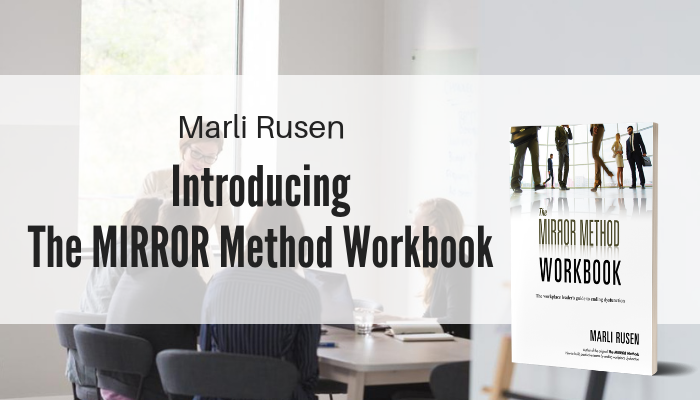Resources > Blog > Introducing The MIRROR Method Workbook

Today it seems, maybe more so than ever before, organizations need help creating healthy workplaces – places and spaces that respect, nurture and support each of us in achieving our full potential.
In my first book, The MIRROR Method: How to Build Productive Teams by Ending Workplace Dysfunction, I explained how fundamental it is, especially today, for workplace leaders to ‘show up’ for their teams to ensure team members ‘show up’ for each other.
I am pleased to say that the MIRROR Method has been a resounding success. Thousands of leaders, from front-line supervisors to CEOs, have benefited from training in the MIRROR Method. Many, however, asked for more. More tools. More information. More support. Simply put – they wanted more of the MIRROR Method.
They wanted help applying the principles of the MIRROR Method, in their organization, to create the kinds of environments that create strong, cohesive teams and productive employees.
To that end, I am delighted to introduce The MIRROR Method Workbook: The Workplace Leader’s Guide to Ending Dysfunction.
The MIRROR Method Workbook offers workplace leaders many tips and tools on diagnosing and resolving workplace conflict and dysfunction including forms, checklists, and critical Q&As. Together, these help leaders work through any dysfunction with which they are faced to make evidence-based and defensible decisions.
Using a specific case study, it shows leaders how to use the MIRROR Method to resolve a ‘workplace complaint’ from beginning to end. Workplace leaders can use the MIRROR Method Workbook to effectively address any issue their team is experiencing, including: safety concerns, poor performance, low productivity, interpersonal conflict, challenging personalities, sexual or racial harassment, misconduct and customer complaints.
The Workbook helps leaders navigate many common questions and tricky issues, including:
- Where do I begin if I have ‘inherited’ a dysfunctional team?
- How do I determine if I should address an issue informally or formally?
- What do I do with ‘he said/she said’ situations?
- What if I have not witnessed something I am asked to address?
- What if someone claims I am biased? Or targeting them?
- What if a complainant demands anonymity?
- What if someone refuses to meet with me? Or walks out?
- How do I coach someone effectively?
- What do I do if problems continue despite my intervention?
To purchase your copy of either The Mirror Method or The Mirror Method Workbook, please visit Amazon or themirrormethod.ca. Both are available in softcover and e-book formats.
